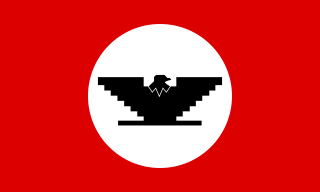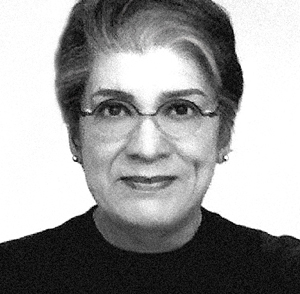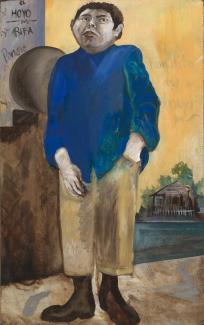Related Research Articles
The culture of Los Angeles is rich with arts and ethnically diverse. The greater Los Angeles metro area has several notable art museums including the Los Angeles County Museum of Art (LACMA), the J. Paul Getty Museum on the Santa Monica Mountains overlooking the Pacific, the Museum of Contemporary Art (MOCA), and the Hammer Museum. In the 1920s and 1930s Will Durant and Ariel Durant, Arnold Schoenberg and other intellectuals were the representatives of culture, in addition to the movie writers and directors. As the city flourished financially in the middle of the 20th century, culture followed. Boosters such as Dorothy Buffum Chandler and other philanthropists raised funds for the establishment of art museums, music centers and theaters. Today, the Southland cultural scene is as complex, sophisticated and varied as any in the world. Los Angeles is strongly influenced by Mexican American culture due to California formerly being part of Mexico and, previously, the Spanish Empire.

Gronk, born Glugio Nicandro, is a Chicano painter, printmaker, and performance artist. His work is collected by museums around the country including the Smithsonian American Art Museum.

Los Four was a Chicano artist collective active based in Los Angeles, California. The group was instrumental in bringing the Chicano art movement to the attention of the mainstream art world.
Elsa Flores is a well known Chicana street artist. Her mother's name was Maria Valenzuela and she was originally from a small village called San Javier located in Sinaloa, Mexico. She is one of the best known members of the Chicano street art movement.

Yolanda Margarita López was an American painter, printmaker, educator, and film producer. She was known for her Chicana feminist works focusing on the experiences of Mexican-American women, often challenging the ethnic stereotypes associated with them. Lopez was recognized for her series of paintings which re-imagined the image of the Virgen de Guadalupe. Her work is held in several public collections including the Smithsonian American Art Museum, the San Francisco Museum of Modern Art, and the Los Angeles County Museum of Art.
Ester Hernández is a California Bay Area Chicana visual artist recognized for her prints and pastels focusing on farm worker rights, cultural, political, and Chicana feminist issues. Hernández' was an activist in the Chicano Arts Movement in the 1960's and also made art pieces that focus on issues of social justice, civil rights, women's rights, and the Farm Worker Movement.
The Southern California Rugby Football Union (SCRFU) is the Geographical Union (GU) governing body within USA Rugby that governs adult rugby union teams in Southern California, the Las Vegas metropolitan area, Arizona, and New Mexico. The SCRFU includes numerous men's and women's, leagues representing all levels of competitive play. College rugby is run by the college conferences and Youth Rugby is governed by Southern California Youth Rugby (SCYR). During the busiest part of the 15s seasons, southern California will have over 80 matches in a weekend. The current board of SCRFU is Geno Mazza (president), Patrick Rashidian, Kevin Holmquist (treasurer) and Bradley Davidson (secretary).

Laura Molina is an American artist, musician, and actress from Los Angeles, California. Molina is perhaps best known for her Naked Dave paintings. She is also the creator of Cihualyaomiquiz, The Jaguar, a self-published comic book printed under Molina's own Insurgent Comix imprint.
Amalia Mesa-Bains, is a Chicana curator, author, visual artist, and educator. She is best known for her large-scale installations that reference home altars and ofrendas. Her work engages in a conceptual exploration of Mexican American women's spiritual practices that addresses colonial and imperial histories of display, the recovery of cultural memory, and their roles in identity formation.

Alexandra Grant is an American visual artist who examines language and written texts through painting, drawing, sculpture, video, and other media. She uses language and exchanges with writers as a source for much of that work. Grant examines the process of writing and ideas based in linguistic theory as it connects to art and creates visual images inspired by text and collaborative group installations based on that process. She is based in Los Angeles.

Judithe Hernández is an American artist and educator, she is known as a muralist, pastel artist, and painter. She is a pioneer of the Chicano art movement and a former member of the art collective Los Four. She is based in Los Angeles, California and previously lived in Chicago.
Virginia Dwan was an American art collector, art patron, philanthropist, and founder of the Dwan Light Sanctuary in Montezuma, New Mexico. She was the former owner and executive director of Dwan Gallery, Los Angeles (1959–1967) and Dwan Gallery New York (1965–1971), a contemporary art gallery closely identified with the American movements of minimalism, conceptualism, and land art.
Laura Owens is an American painter, gallery owner and educator. She emerged in the late 1990s from the Los Angeles art scene. She is known for large-scale paintings that combine a variety of art historical references and painterly techniques. She lives and works in Los Angeles, California.

Laura Aguilar was an American photographer. She was born with auditory dyslexia and attributed her start in photography to her brother, who showed her how to develop in dark rooms. She was mostly self-taught, although she took some photography courses at East Los Angeles College, where her second solo exhibition, Laura Aguilar: Show and Tell, was held. Aguilar used visual art to bring forth marginalized identities, especially within the LA Queer scene and Latinx communities. Before the term Intersectionality was used commonly, Aguilar captured the largely invisible identities of large bodied, queer, working-class, brown people in the form of portraits. Often using her naked body as a subject, she used photography to empower herself and her inner struggles to reclaim her own identity as "Laura" – a lesbian, fat, disabled, and brown person. Although work on Chicana/os is limited, Aguilar has become an essential figure in Chicano art history and is often regarded as an early "pioneer of intersectional feminism" for her outright and uncensored work. Some of her most well-known works are Three Eagles Flying, The Plush Pony Series, and Nature Self Portraits. Aguilar has been noted for her collaboration with cultural scholars such as Yvonne Yarbo-Berjano and receiving inspiration from other artists like Judy Dater. She was well known for her portraits, mostly of herself, and also focused upon people in marginalized communities, including LGBT and Latino subjects, self-love, and social stigma of obesity.
Pacific Standard Time: Art in L.A., 1945–1980 was a scholarly initiative funded by the J. Paul Getty Trust to historicize the contributions to contemporary art history of artists, curators, critics, and others based in Los Angeles. Planned for nearly a decade, PST, as it was called, granted nearly 60 organizations throughout Southern California a total of $10 million to produce exhibitions that explored the years between 1945 and 1980. Underscoring the significance of this project, art critic Roberta Smith wrote in The New York Times:
Before [PST], we knew a lot [about the history of contemporary art], and that lot tended to greatly favor New York. A few Los Angeles artists were highly visible and unanimously revered, namely Ed Ruscha and other denizens of the Ferus Gallery, that supercool locus of the Los Angeles art scene in the 1960s, plus Bruce Nauman and Chris Burden, but that was about it. After, we know a whole lot more, and the balance is much more even. One of the many messages delivered by this profusion of what will eventually be nearly 70 museum exhibitions is that New York did not act alone in the postwar era. And neither did those fabulous Ferus boys.
Michael C. McMillen is a sculptor, installation artist, and short filmmaker from Los Angeles, California.

Roberto Chavez is an American artist, known for his personally symbolic portraits, public murals and "funny-grotesque" paintings that reflect the multicultural landscape of Los Angeles. He was recently included in the Getty Center's Pacific Standard Time: Art in L.A., 1945-1980 and the Smithsonian’s Our America: The Latino Presence in American Art exhibits.
Yreina Cervantez is an American artist and Chicana activist who is known for her multimedia painting, murals, and printmaking. She has exhibited nationally and internationally, and her work is in the permanent collections of the Smithsonian American Art Museum, The Mexican Museum, the Los Angeles County Museum, and the Los Angeles Museum of Contemporary Art.
Elizabeth Sisco is an artist active in the Chicano art movement.
Chon A. Noriega is an American art historian, media scholar, and curator. Noriega is professor of cinema and media studies at UCLA School of Theater, Film and Television. He was also the director of the UCLA Chicano Studies Research Center (CSRC) from 2002 to 2021.
References
- ↑ Keller, Gary D. (2004). Chicano art for our millennium : collected works from the Arizona State University community. Mary Erickson, Pat Villeneuve, Melanie Magisos, Craig Smith, Mesa Southwest Museum. Tempe, Ariz.: Bilingual Press/Editorial Bilingüe. ISBN 1-931010-25-0. OCLC 54046196.
- ↑ Mata, Irene (2015). Domestic disturbances : re-imagining narratives of gender, labor, and immigration (First paperback ed.). Austin. ISBN 978-1-4773-0984-1. OCLC 926743263.
{{cite book}}: CS1 maint: location missing publisher (link) - ↑ "About". Laura Alvarez. October 26, 2014. Retrieved March 10, 2021.
- ↑ Pérez, Laura Elisa (2007). Chicana art : the politics of spiritual and aesthetic altarities. Durham. ISBN 978-0-8223-3852-9. OCLC 74029278.
{{cite book}}: CS1 maint: location missing publisher (link) - ↑ La vida latina en L.A. urban Latino cultures. Gustavo Leclerc, Raúl. Villa, M. J. Dear, University of Southern California. Southern California Studies Center. Thousand Oaks, Calif.: SAGE Publications. 1999. ISBN 0-7619-1619-9. OCLC 40467433.
{{cite book}}: CS1 maint: others (link) - ↑ "The Double Agent Sirvienta: Blow Up the Hard Drive | LACMA Collections". collections.lacma.org. Retrieved March 9, 2021.
- ↑ "Blow Up the Hard Drive | Smithsonian American Art Museum". americanart.si.edu. Retrieved March 10, 2021.
- ↑ Pagel, David (September 6, 2002). "This Glittery Lawn Mower Cuts to the Tough Questions". Los Angeles Times. Retrieved March 10, 2021.
- ↑ Hubler, Shawn (September 14, 2000). "Art Show Asks: Who Are We?". Los Angeles Times. Retrieved March 10, 2021.